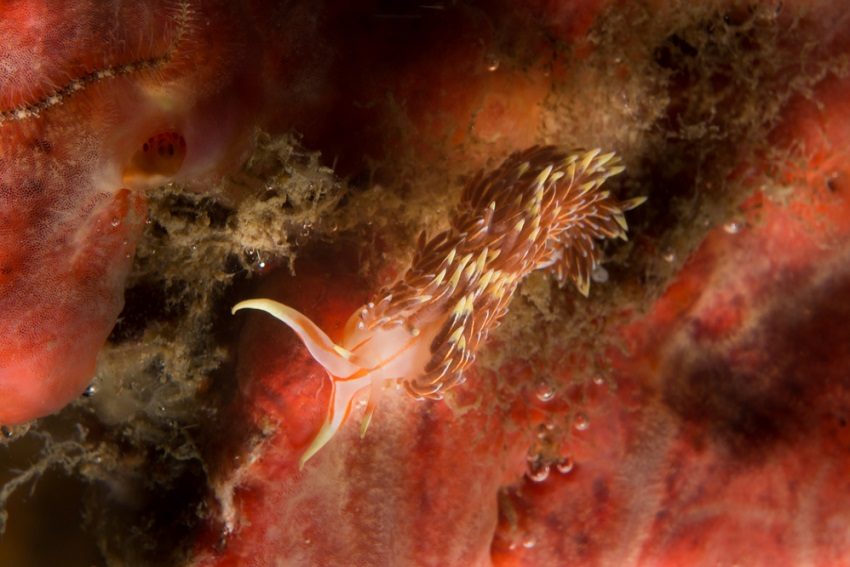Memory transplant: Sea snails and a potential Alzheimer's treatment

Might it be possible to transplant lost memories, or take on the memories of someone else? New research indicates that memories might be more movable than we think, and could even provide a treatment for the early stages of Alzheimer’s disease.
Memory is a powerful thing. One could argue that the majority of human behaviour is motivated by memory – either the desire to create new memories and/ or choosing a course of action based on memories from previous lessons learnt. Accordingly, memory is an area of interest to researchers from myriad disciplines.
A particularly compelling area of research is the hunt for the engram, a term coined in 1904 to describe the physical manifestation of a memory in the nervous system. That is, an actual physical trace of a specific memory, a single brick in the great wall of long-term memory.
The most common explanation for how we store long-term memories is via changes in synaptic strength. That is, experiences trigger the firing of certain synapses in the brain, and this forms a neural network, which becomes stronger the more it is activated. These networks are used when we need to recall a long-term memory. Ho-hum.
However, new research from neurobiologists at the University of California in Los Angeles (UCLA) has shown that long-term memories may be stored as epigenetic changes. Epigenetics exist ‘above’ (the English translation of the Greek ‘epi’) DNA. Deoxyribonucleic acid (DNA) is your body’s genetic instruction manual, but epigenetics control how your genes are read and expressed. Genes control the colour of your eyes or your tendency towards short-temperedness, but epigenetics are the puppet masters, controlling which of your genes activate, when, and how.
The UCLA research team administered mild electric shocks to the tails of a group of marine snails, strong enough to cause them to withdraw into their shells but not strong enough to do any lasting harm. Following the experiment, snails who received the shocks would withdraw into their shell for around 50 seconds when someone tapped on their shells, whereas snails who had not received the shocks would withdraw into their shells for only about one second.
The researchers then extracted RNA from the nervous system of the shocked snails and injected it into a group of unshocked snails. Ribonucleic acid (RNA), like DNA, is a chain of sugars linked together by phosphates. The critical difference between DNA and RNA is that RNA has an extra oxygen atom. This makes RNA less stable, and more changeable, than DNA. This instability makes RNA ideal genetic material for organisms that need to change quickly; the flu virus is one example of an organism that benefits from using RNA, as it allows the virus to mutate and get the jump on the immune system of its host.
After receiving RNA from the shocked snails, despite never experiencing the electric shocks themselves, the ‘unshocked’ snails responded to taps in a similar way to the group that had received the shocks – withdrawing into their shells for around 40 seconds in response to a tap.
RNA was also extracted from another group of unshocked snails and injected into another group of unshocked snails. These animals did not show an extended withdrawal reaction after receiving a tap. This allowed the researchers to determine that the change in behaviour was not a result of the process of injecting RNA, but rather of the experience of the animal from whom the RNA was taken.
Importantly, the researchers found they had changed the DNA of the unshocked snails via a process called DNA methylation. DNA methylation is a classic example of epigenetics whereby the addition of a methyl group to DNA changes gene expression and thus the function of a gene.
What this all amounts to is that the UCLA research team effectively transferred the memory of the electric shock from one snail to another, via epigenetic changes. If the epigenetic memory theory is supported in humans, then the long game could see the development of technology to allow memories to be copied into your brain.
Indeed, head of the UCLA research team, Dr David Glanzman, believes it may eventually be possible to use RNA to restore lost memories in those suffering the early stages of Alzheimer’s disease.
So, volunteers for human trials, any particular snail memories you would like to have implanted?
Dr Jessica L Paterson, Senior Research Fellow, CQUniversity, Appleton Institute